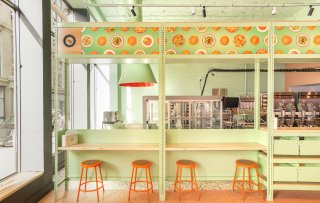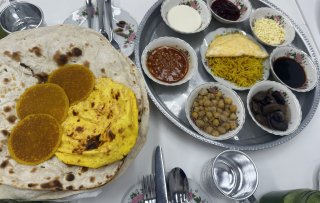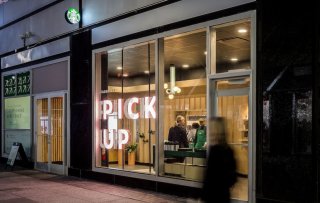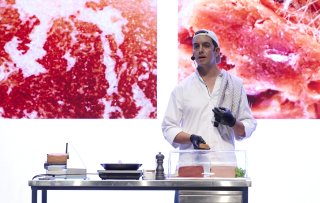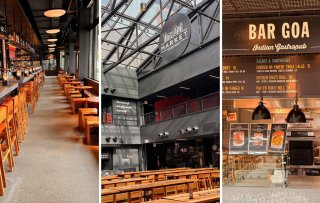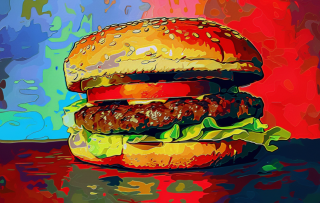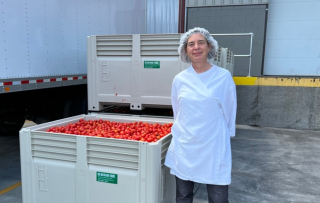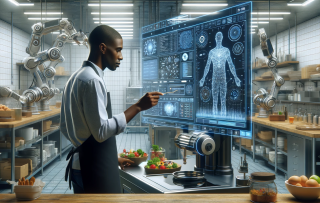Tired of unhealthy and uninspiring meals on the road, Luke Saunders pivoted his career and became a food tech entrepreneur. With zero restaurant experience, a bold idea, and just two off-the-shelf vending machines, he launched Farmer’s Fridge in 2013. His vision: to make fresh, healthy food as convenient and accessible as a candy bar. Fast forward a decade, and Farmer’s Fridge now operates 1,700 fridges across the U.S. and sells its products in over 500 retail stores. We interviewed Luke at his head office in Chicago, where he shares the ups and downs of building an infrastructure-heavy business and discusses his ambitious goal to revolutionize the way people think about grab-and-go food.
What made you start a healthy fridge company?
“Back in 2013, I was working as a salesman driving a thousand miles a week and spending 20 to 30 hours on the road. I covered Michigan, Ohio, Indiana, and Kentucky, visiting small towns and mid-sized cities across the Midwest. Eating healthy on the go was nearly impossible. My reality was pretty bleak: I could grab something at a fast-food restaurant, settle for whatever was at a gas station, or try to prepare and pack my own meals ahead of time. None of those options worked well for me, so I started thinking about creating an alternative.”
“At the time, there was a lot of talk about whether people even wanted to eat healthy food – especially in the U.S. But the idea that people don’t like healthy food? I never bought into that. When I was driving around, struggling to find healthy options, it wasn’t because I didn’t want them – it was because they simply weren’t there. I went out of my way to stay in hotels near grocery stores so I could buy fruits and vegetables and prep my own meals. But most people don’t have that kind of time or flexibility.”
What sparked the idea for a vending machine?
“The opportunity I saw was to create a healthy food concept that focused on fresh, high-quality meals. But, even though I had no relevant experience in food or hospitality, I quickly realized the traditional restaurant model wasn’t built for this. I love restaurants, but when you think about it as a business model, it’s kind of crazy. You’re making everything to order, with your manufacturing and sales happening under the same roof. And if you want to scale, you have to replicate that entire setup for every new location.”
“Then, there’s the reality of smaller towns and communities. Most places only have one McDonald’s and maybe one mom-and-pop restaurant. There’s a reason for that – they’re capturing all the food dollars available in the area. Opening another restaurant in the same space just isn’t viable; there’s not enough throughput to make it profitable. To fill that gap, you need a completely different business model that focuses on unit economics.”
“That’s when the idea hit me: what if you made the food in one central location? You’d get the economies of scale like a consumer packaged goods (CPG) company, but then you need to find a way to deliver it to people quickly, without the overhead of a traditional restaurant. That’s when I thought of a vending machine.”
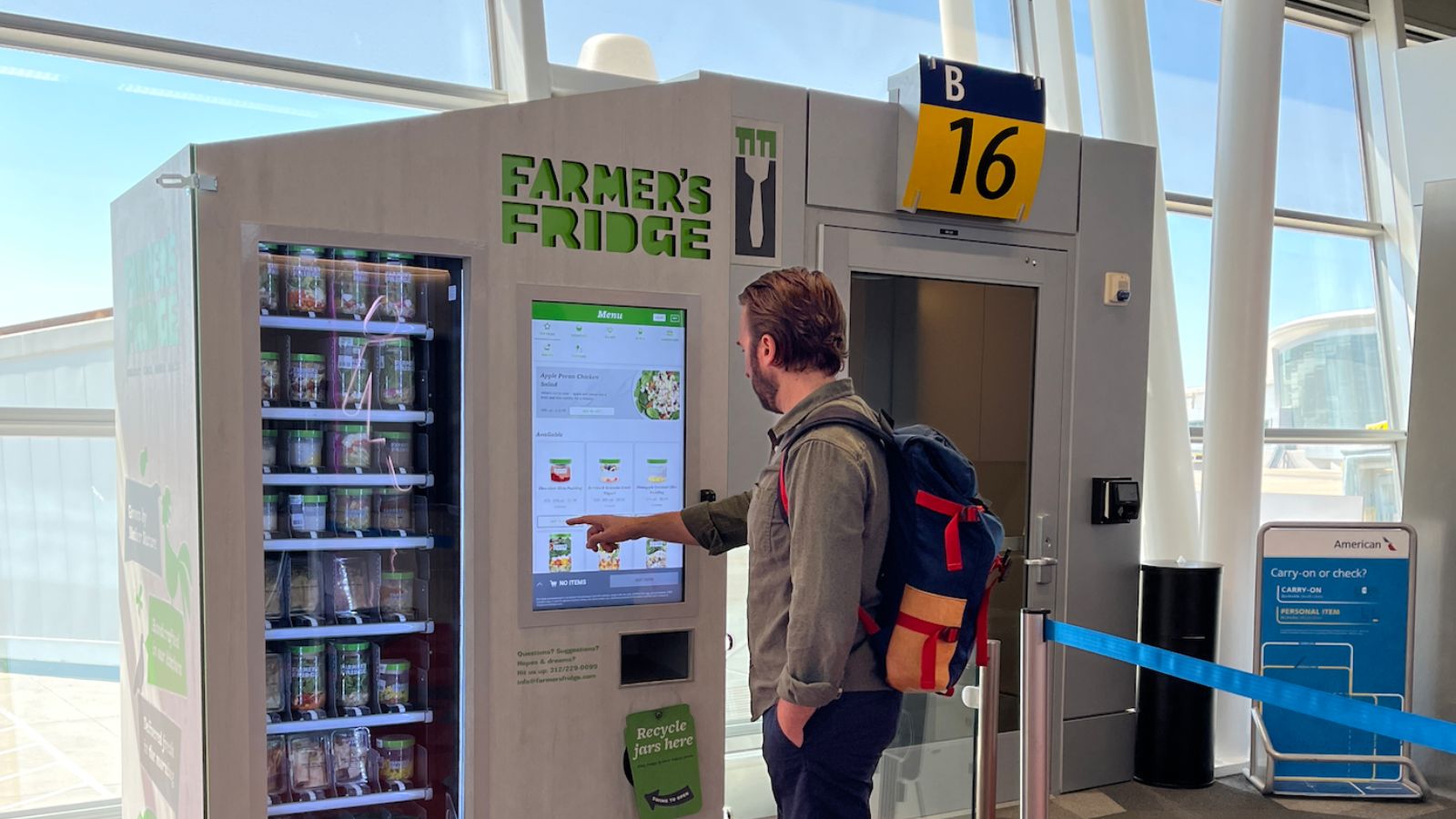
Simplifying operations on-site or the point of sale itself?
“Honestly, if I could go back in time and convince myself not to start a food business, I probably would. It’s much harder than most industries. And because people love food, the market is packed with passionate, borderline crazy competitors – many of whom will never make a profit but are in it for the love of food. That said, our business model is built to simplify scaling.”
“Big fast-food chains are trying to do the same by drastically simplifying operations on-site. Take McDonald’s as an example. They serve around 40 million people a day in the U.S. alone, with 20,000 distribution points, each staffed by around 30 people, complete with drive-thrus and countless moving parts. To make that work, they’ve simplified their product and standardized operations across locations.”
“Our approach flips that model on its head. Instead of having complex operations at the point of distribution, we’ve stripped it down to the basics. You press a button and food comes out – no humans required. All the complexity is moved to our centralized production facility where we prepare the food. That ensures a higher-quality and fresher product. At our production facility, we manage 150 ingredients and there are real people cooking and mixing, much like in a restaurant kitchen. But, by doing it all in one location instead of 2,000 points of sale, we can deliver restaurant-quality healthy food on a much larger scale."
About Farmers Fridge
Founded: in 2013 by Luke Saunders
November 2024: operating fridges at 1,700 locations all across the U.S. and on the shelves in 500 retail locations
Production location of approximately 10.000 m2
Key-account approach: airports, shopping malls, train stations, catering, school campussus, hospitals and other healthcare institutions
Where do you add value for your customers?
“About 11 years ago, I went to a vending machine show and found an off-the-shelf vending machine that we could use. The thing about vending machines is that they have a weird constraint – they can’t actually make anything. From a business perspective, it makes sense: they’re cheaper to place and you can put them much closer to consumers. The big question for us was: can healthy food still taste good, even if it’s a few days old by the time you eat it? And the answer is absolutely yes. I lived in England for six months and saw firsthand how excellent grab-and-go food could be. That gave me confidence we could do it.”
“Interestingly, one of the hardest things to figure out was how to make a good salad. It turned out to be critical for building our competitive advantage. On one end of the market, you have salads from places like Panera or Sweetgreen, priced between $12 and $15. On the other end, you have prepackaged grocery store salads at $3 to $5. There aren’t many products with such a massive price gap. By comparison, the sandwich market is much more tightly clustered.”
“But with this huge gap in the market, that’s where we saw an opportunity. I realized we could make a salad with the same high quality as the high-end quick service restaurant (QSR) concepts, but at a price point much closer to grocery store grab-and-go options. We started looking at every product through that lens: where can we add the most value for consumers? It’s about delivering something that feels premium but is still affordable and convenient.”
What’s your definition of healthy food?
“Of course, we want our food to be healthy. But we make sure not to be dogmatic or outspoken about it. For me, that means it needs to be reasonably balanced in macronutrients – protein, fat, and carbohydrates – but also in things like salt, fiber, and overall nutritional value. It doesn’t have to be perfect – like hitting exactly 30% of your daily intake – but it also shouldn’t be 150%.”
“There are two areas where we’re really strict: servings of fruits and vegetables, and whole grains. Fruits and vegetables are the one thing that everyone agrees is good for you. Diet trends and fads come and go, but the consistent advice is clear – you need to eat more fruits and vegetables. That’s one of our main goals: to make fresh food as accessible as a candy bar. Whole grains are the other area where there’s broad agreement. Everyone agrees that incorporating more whole grains is good, so we prioritize that too.”
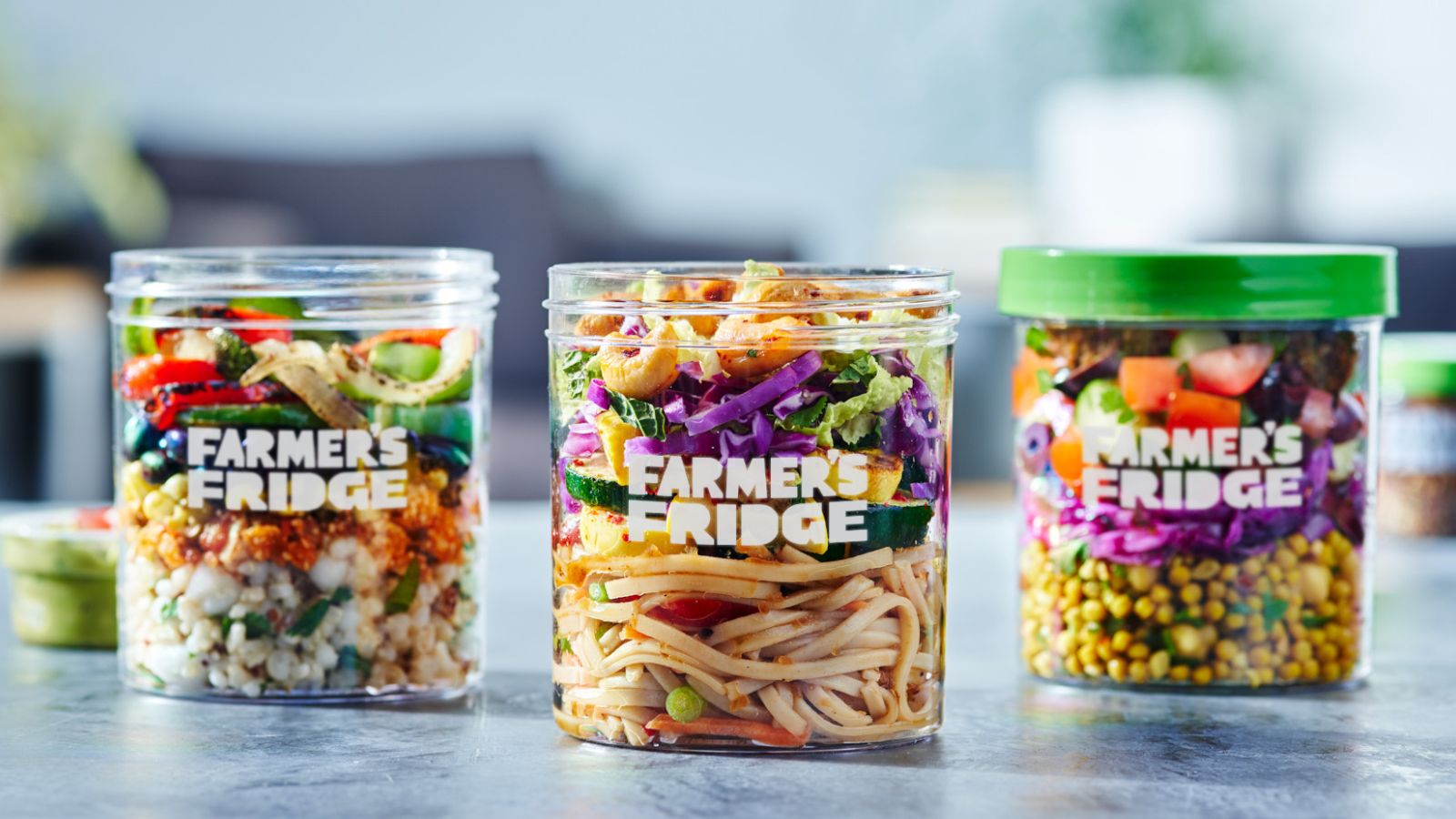
Who do you serve?
“We keep our menu simple – just 30 items. We offer a variety of fresh salads, sandwiches, bowls and breakfast items. Most of them are offered in transparent reusable jars. The menu doesn’t change often; we rotate maybe one or two items a month for seasonality, but our core products stay on the menu for years.”
“Our consumer profile is incredibly broad because we put our fridges everywhere – that’s the goal. That gives us a much larger customer base than most early-stage companies typically aim for. Business school advice says to focus on a niche and expand from there. But for us, it’s about getting as many people as possible to try our products. We’ve had to design everything with this mass-market mentality in mind, and as a result, our customers are pretty balanced across demographics.”
“Across non-transient locations – basically anywhere outside of airports – 60% to 70% of people who try our products come back and buy again. That’s an off-the-charts retention rate. Even more impressive, about one in four of those customers becomes a so-called ‘super user,’ coming back about once every six weeks. On average, our customers visit six times a year. That’s a lot higher than the industry average for similar chains.”
“The question we’ve always asked is: what do these people have in common? Why is a 60-year-old businessman buying a salad from the same fridge as a 22-year-old intern? The answer we’ve found is that they’re people who care about their health – but they’re not health nuts. Just like us, they believe in balance. They eat a salad so they can enjoy a candy bar or a slice of pizza later. They’re also discerning about food quality. They notice the details. When they see one of our fridges, they recognize how much thought and care went into the food.”
“But beyond that core group, we also attract people who are just hungry. And what’s fascinating is how well this works in all kinds of places. Some of our strongest markets are the ones people assumed wouldn’t work for us. For example, we sell a lot of products in downtown Chicago as well as in rural parts of Illinois – but the dynamics are completely different. Downtown, people are busy and don’t have time to think about food. Price isn’t much of a concern. In more rural areas, there are fewer options, so people who crave healthy food turn to us.”
How does your fulfillment work?
“We now have 1,700 fridges and over 500 retail locations where we sell our products. We make all the food in our Chicago production facility. We handle all fulfillment to the fridge’s endpoint. We sell food from California to New York, to Texas. This vending machine business is a very operationally challenging business by nature. We’re dealing with fresh food – it’s perishable, constantly decaying, and subject to variation. One week, the size of a head of lettuce changes; the next, the tomatoes might be different. This includes managing 150 ingredients and delivering to thousands of fridges. It’s like solving a massive, ever-changing puzzle.”
“To give you an idea of the complexity: with 1,700 fridge locations, 38 slots per fridge, and 30 stock keeping units, our algorithm manages over 10 million variables every day. If I had tried to start this business 20 years ago, it wouldn’t have been possible. The tools we use today are cloud-based and the cost of running these calculations is pennies. Two decades ago, it would’ve cost a dollar per salad. The evolution of data tools has fundamentally changed what’s possible in this space.”
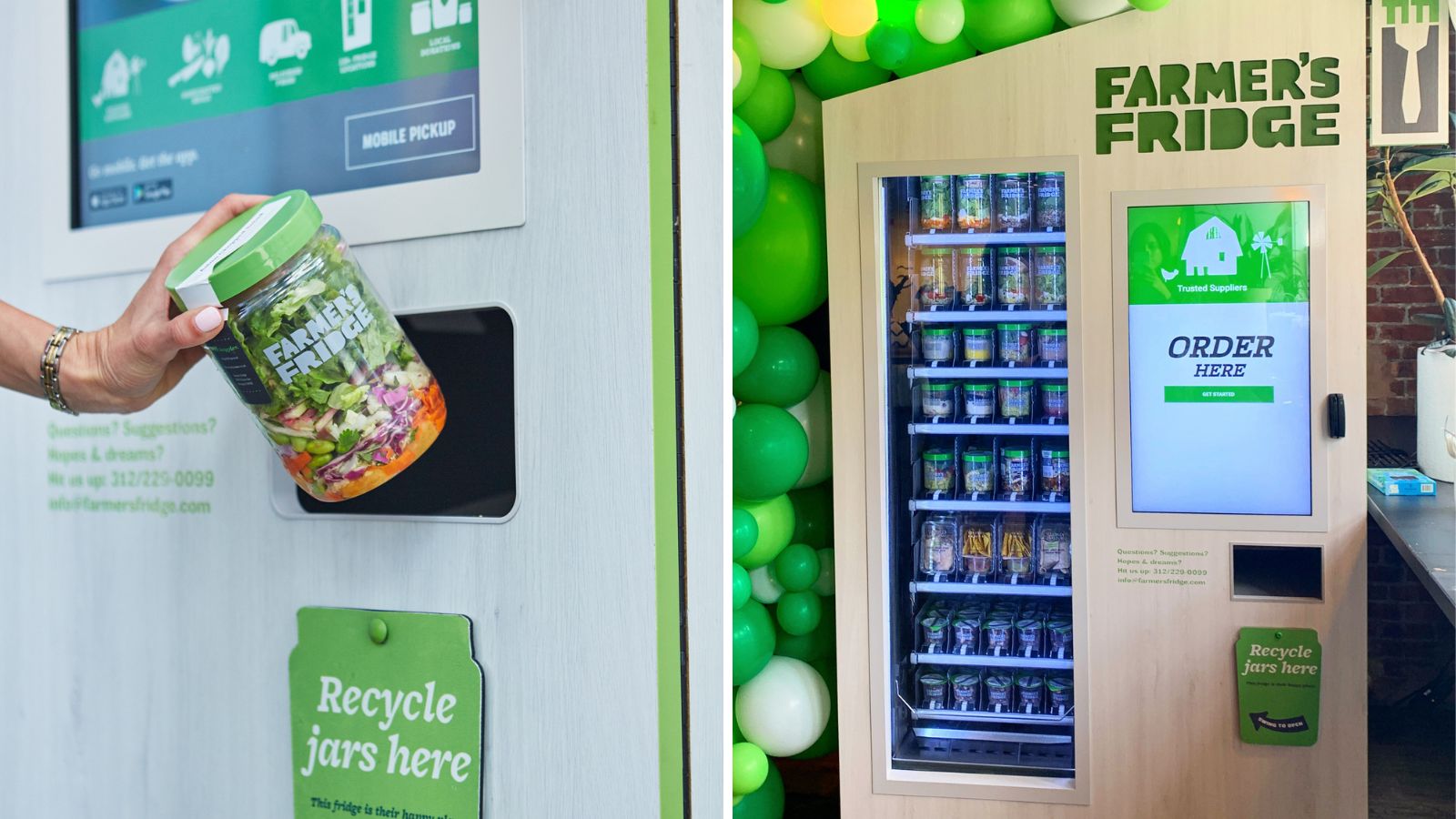
“The whole business runs on a demand-planning algorithm we built internally. Every day, we make fresh food, but when it’s being prepared, we don’t yet know exactly where it’s going. Our vending machines have real-time inventory tracking and that same inventory is what powers our app. When someone places an online order, it’s pulled directly from the same database.”
“On the backend, we’re constantly running forecasts. We look at last year’s sales data, account for new locations, and try to predict demand. But demand can vary wildly – sales at a single location can swing by as much as 50% from day to day. You can’t fully predict that, so instead, you have to react and adjust. Every day at 6:00 a.m., our algorithm reviews inventory across the entire network and rebalances it. Drivers then go out to refill the fridges based on that updated plan. Because we control the entire supply chain end-to-end, we can ensure faster and more consistent deliveries.”
The first fridge...
“It would be impossible to forget. I didn’t sleep for days – weeks even. I was so anxious. I had quit my job, poured all my savings into this, and taken on debt to buy two vending machines. I had no idea if it would work. I was trying to sell fresh food from a vending machine and half the people I told about it looked at me like I was totally insane. Even when people said nice things, I could see in their eyes they thought I was an idiot.”
“To make matters worse, I had no restaurant experience. I’d never worked in food preparation. Sure, I’d made salads in my apartment, but I’d never made 100 of them at once. The first time I ever tried was just a week before opening because I couldn’t afford to do dry runs. That week, I offered free catering to a few groups of people – figuring the stakes were lower since the food was free – but I couldn’t even deliver those orders on time. I was an hour late to the first one.”
“The first fridge ended up in this shabby food court. It was the last place in Chicago I wanted, but every other location had turned me down. At first, I thought it would be an easy sell: ‘You’ve got empty space. Put in a vending machine and make money off it – it’s found income!’ But for most landlords, it wasn’t enough money to matter. In a million-square-foot building pulling in billions, my $50 a month didn’t move the needle. On top of that, landlords didn’t want to upset their restaurant tenants by leasing vending machine space. So, time and again, it was a flat-out no.”
“But this one operator was desperate because his food court was awful. My wife came with me when I got the commitment and she asked, ‘Why on earth did you say yes to this?’ I told her it was the only place in Chicago that had said yes. I had to start somewhere. It turned out to be a great spot, though. We were squeezed between McDonald’s, Subway, and Dunkin’ Donuts, along with a few owner-operated ethnic food stalls. The people visiting this food court were adventurous eaters looking for offbeat things to try. When they found us, they were curious enough to give us a shot.”
“A year later, the location went bankrupt and we had to move. But I’ll never forget it. Starting in a less-than-ideal spot had its benefits. We could afford to mess up without too many people noticing. The vending machine didn’t even work properly at first. I spent so much time handing out food manually or pretending we were sold out for the day. If we’d launched in a high-profile location, they would’ve kicked us out immediately and that could’ve been the end of Farmer’s Fridge.”
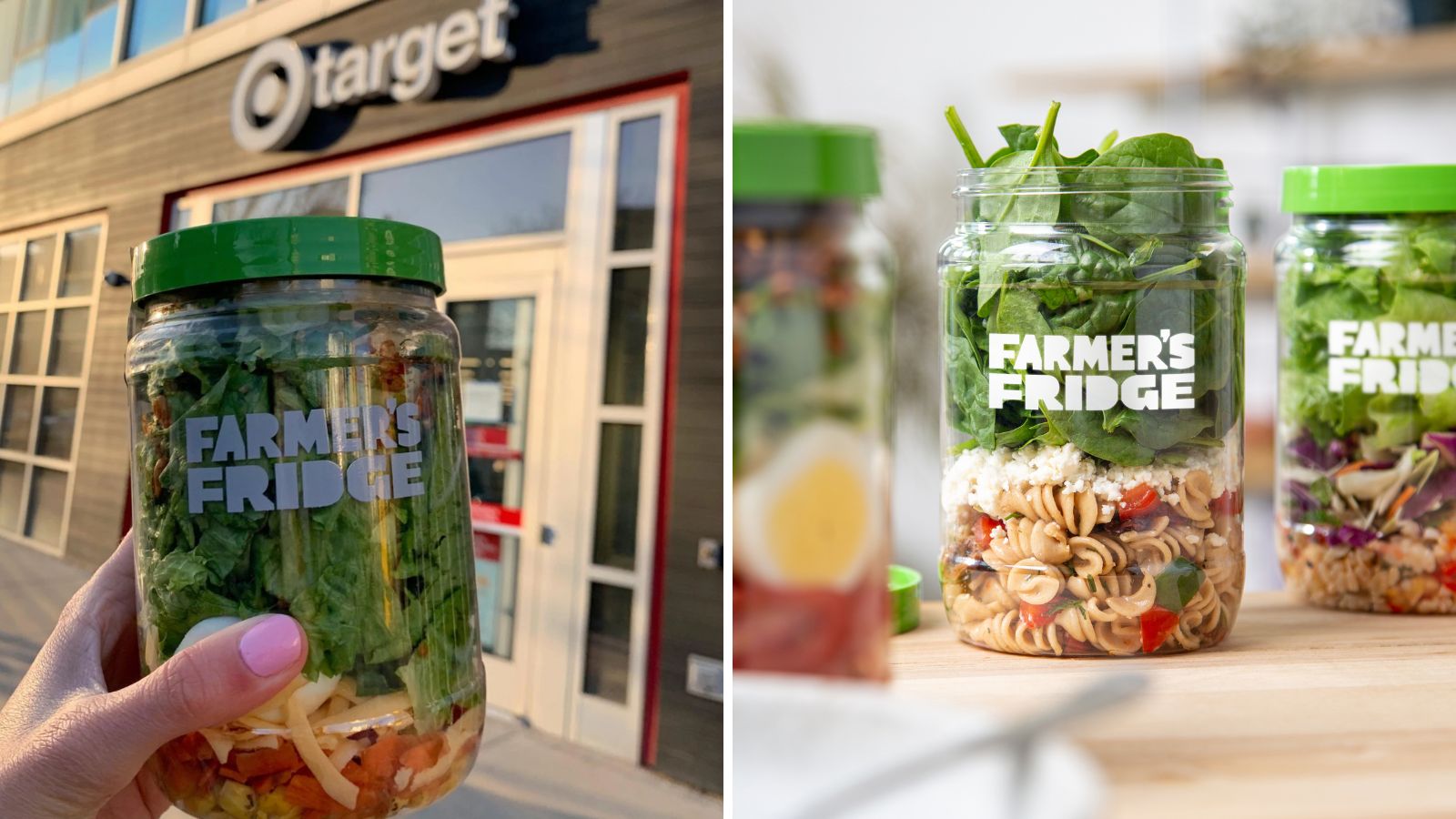
What were the biggest learnings from the first 10 years?
“One big lesson was about the machine itself. The first vending machine we built was enormous – already big on its own, and I’d added a sign on top that made it 12 feet tall. It looked really cool, but then a large convenience store called and asked if we could install one in their store. The problem? It couldn’t even fit through the door. That was a wake-up call, and we had to refine the design to make the machine more scalable.”
“Another key learning was the importance of branding. Early on, we made a lot of decisions about how to position Farmer’s Fridge, but we didn’t always have the right insights. We teamed up with experienced market researchers who helped us dig deeper into understanding our customers and what resonated with them. For example, we started out using reclaimed wood in our machine designs, but we learned that customers weren’t focused on the machine – they were looking at the food. So, we simplified the design to let the food take center stage. A lot of our early branding work was about figuring out how to present our concept in a way that truly connected with people.”
“The third big learning was food-related. When we started doing insights work, we found that 95% of people loved the concept of Farmer’s Fridge. Another 95% thought it was convenient. But only 50% liked the food. That was a hard truth, but it pushed us to focus on improving our menu.”
What’s your ambition looking forward?
“The goal is simple: to make healthy food as accessible as a candy bar. It should be just as convenient, just as familiar, just as delicious – and just as affordable. Accessibility comes down to combining all those factors.”
“For context, there are about 40,000 Subway restaurants in the U.S. A Farmer’s Fridge can be profitable with just 5% of the revenue it takes to run a Subway. So when I do the math, I think: why not aim for a million fridges? There are 8 million vending machines in the U.S., and only 10% sell fresh food. To me, 1 million Farmer’s Fridges seems like a reasonable target. We just need to keep building on the growth we’ve achieved over the last 10 years.”
“We also plan to sell warm food one day – I’m 100% sure that’s in our future. But warm food is tricky. Even with the best technology, like the turbo ovens Starbucks uses, it takes a minute and a half to heat a dish. That’s fine for one customer, but in a vending machine, if you get 10 customers in a row, someone could end up waiting 15 minutes for their meal. That’s just not going to work. The alternative is to have 10 microwaves running in parallel, but that introduces new challenges – like requiring more electricity than most locations, especially airports, can provide.”
“There are a few companies in the U.S. experimenting with hot food vending machines, and I think we’ll eventually develop a product line that works for that space. But when I started the research and development for a hot vending machine, I realized it would cost 100 times more than what we spent refining our cold vending machines. For now, we’ve had plenty of success with fresh, non-heatable food. That said, I believe the market for hot food will ultimately be larger – but the execution is much harder. When the time is right, we’ll take it on.”
.jpg-28x28.jpg) Written by
Written by 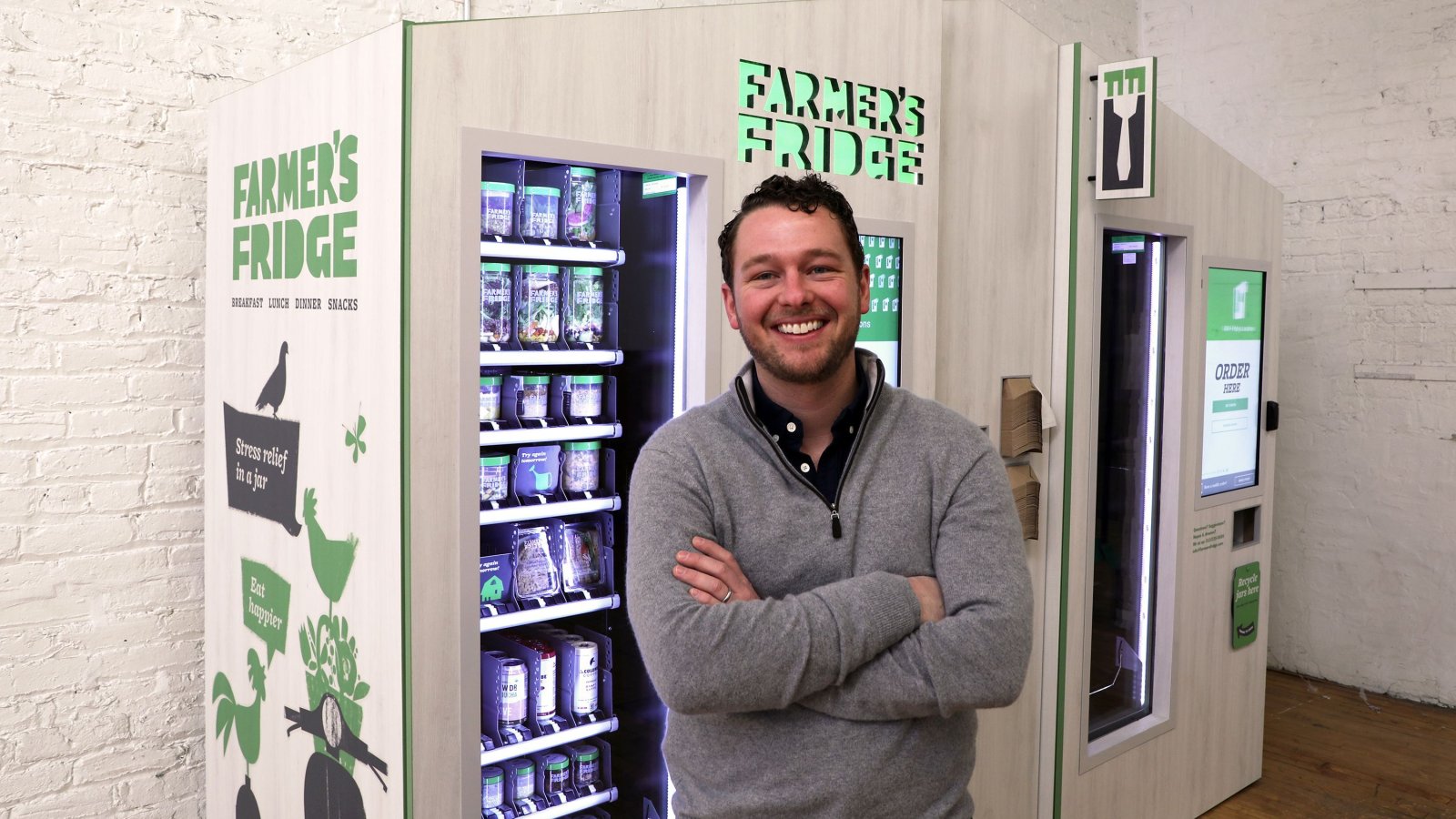
.jpg-300x300.jpg)
.jpg-50x50.jpg)














